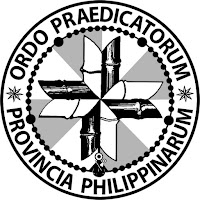An Antibody in the Body of Christ
AN ANTIBODY IN THE BODY OF CHRIST
Most Rev. Virgilio Pablo David, DD
Bishop of Kalookan
Most Rev. Virgilio Pablo David, DD
Bishop of Kalookan
Homily for Thursday of the 4th Week of Easter, 29 April 2021, Feast of St. Catherine of Siena, John 13:16-20
When Pope Francis appointed a woman for the first time to serve as Undersecretary to the Synod of Bishops, Sis. Nathalie Becquart, he wasn’t doing anything really unusual. The female saint whose feast we celebrate today, played an even more important role in the Church than being Undersecretary for the Synod of Bishops—St. Catherine of Siena. She was responsible for the return of the Papacy to Rome after residing in the city of Avignon in France for almost seven decades.
She was just 30 years old when she went out of her way to write letters to Popes, Cardinals, Bishops, and even kings and queens, and to pester them to help in restoring he papacy in Rome as the symbol of unity of the universal Church. Imagine the Pope Gregory XI appointing this young woman to serve as Papal Legate to facilitate a dialogue between Avignon and Florence in order to mediate their political conflicts and return the Papacy in Rome?
She succeeded in her task, but the return eventually led to an even greater problem. After Pope Gregory XI died, a new Pope, Urban VI, was elected. But his policies became so unpopular they pressured him to resign. When he refused to resign, they elected another Pope who lived in Avignon and caused a terrible division in the Catholic Church which is now called the “Great Schism,” which would last for 39 years.
Catherine would be instrumental in getting all the other Church leaders to eventually recognize, decades after her death, that, in spite of his human flaws and weaknesses, the bishop who occupied the Holy See in Rome had primacy and was meant to serve as the legitimate Pope, not anyone else.
Catherine suffered much in the last years of her life and offered her devastating disease as a participation in the passion of Christ, believing that the wound of division in the Body of Christ could only be healed by an enormous sacrifice on her part. Not only did she receive the marks or stigmata of the wounds of Christ on her own body like St. Francis of Assisi did, she died at exactly the same age as Jesus did, thirty-three.
Today’s readings make us realize that the problems of internal conflicts and divisions within the Church have always been present since the very start. In the Gospel, right at the Last Supper, Jesus would speak about the first person who would desert him, Judas Iscariot.
In the first reading, St. Luke tells us John Mark deserted Paul and Barnabas. The fact that he went straight to Jerusalem and not to Antioch, which was their Church of origin, could only mean he was uncomfortable with Paul’s aggressive way of evangelizing and welcoming Gentiles into the Church. At that time, the leaders in Jerusalem, headed by James were not yet open to baptizing Gentile converts to Christianity unless they were circumcised and were willing to become Jews first.
This terrible conflict between the pro-James faction and the pro-Paul faction was eventually settled through a dialogue in the Council of Jerusalem, through the facilitation of cooler heads like Peter. Up to now the Church continues to address its issues this way—through synods and councils, where people could honestly express their opinions and even disagreements and still remain as brothers and sisters.
Dialogue has always been the key to the resolution of conflicts in the Church since the beginning. It was also the approach of St. Catherine, whose best known work was entitled “Dialogue of Divine Providence.” There will never be a time in history when we will not be confronted by similar problems that have to do with the humanity of the Church as an institution. Like any human institution, we will always have to learn how to deal with tendencies towards division and how to do conflict management.
It was Saint Paul who first described the organic unity of the Church as “Body of Christ”. Division need not always be negative; it can also be a signal of growth. In the human body, there are healthy cells and cancerous cells. When cancerous cells divide, they metastasize and become more toxic and destructive. But when healthy cells divide, the body grows and heals itself.
On this feast day of a great woman who acted like a good antibody within the Body of Christ, let our prayer be that our divisions be only for the growth, never for the disintegration of the Church.














No comments: